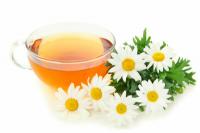Ivy has brown leaves
Brown leaves on your ivy are a sign of improper care or a pest or fungus attack. Often times, removing the leaves will help.
Drought causes brown leaves
Brown leaves can occur when ivy be a sign of drought and drought. Generally they prefer Climbing plants semi-shady to shady locations that have a high level of humidity. If there is too much sunlight, ivy only thrives on moist soil. You should also make sure that the soil is rich in nutrients and lime. A humus-rich soil is best.
Although the ivy is very adaptable, water more often if the leaves are brown. Check if the soil is too dry. Spray the leaves on a plant that has already grown a long way. Do this when the sky is overcast as the leaves will burn easily.
Additional protection is required in winter
Not every type of ivy is hardy. Brown discoloration may also be related to this. If you have planted one of the frost-sensitive varieties, some of the leaves will freeze to death. The native variety Hedera helix is best for outdoors, as it is not so sensitive to low temperatures.
More sensitive varieties, such as Hedera helix Hibernica or Hedere colchica, require a very favorable location where the soil does not freeze. Otherwise, discoloration or falling leaves will result. In addition, during the winter the firmness of the adherence roots of the leaves to walls decreases, which is less pronounced in the case of the Hedera helix variety. Especially with young plants in a shady location, it is important to protect them from the winter sun with a fleece.
A symptom of fungal disease is brown discoloration
Infestation of ivy with the fungus Phytopthora palmivora is widespread. This fungus spreads best when the soil is very humid and forms many spores. The spores move mainly in the water of the soil. You can also get to the leaves and stems through the water. The fungus is very resistant and nests in the ground for years. In the event of an infection, prune the plant severely. Also remove any discarded leaves, as these will continue to transmit the fungus. You can also prevent waterlogging in the soil by only watering when it is dry.
The climbing ivy is not only a medicinal plant, but in gardens and around ...
Another fungus is the Xanthomonas campestris. The infection is also called ivy cancer. If there is an infestation, small spots form on the edge of the leaf. The color changes from black to reddish-brown as the disease progresses. If the infection is well advanced, the leaves fall off. The leaf stalks can also become infected and turn brown. The fungus spreads particularly well in damp conditions. The bacteria multiply by splashing water on the ground, from which they then reach the leaves. To contain the infestation, cut off the infested leaves and shoots. Also, disinfect your cutting tools, as the bacteria will also settle there.
Pests can also discolor the leaves
A very common pest for ivy is the black weevil. You can best recognize the infestation by roundish marks on the leaves. If the infestation is severe, treatment with nematodes is recommended. This is a natural enemy of the black-headed weevil. If the infestation is not yet very pronounced, collect the animals by hand.
Pests, such as the common spider mite, attack most of all Houseplants at. You can find the pests on the lower side of the leaves, where you remove the nutrients from the leaves. Yellowish and silvery discolorations occur. If the infestation is more advanced, the leaves turn brown and dry. Spider mites multiply particularly well in dry and warm air. Therefore, do not place your plants too close to a heater. You should preferably fight mites with special preparations from specialist dealers. Acaricides have been shown to be effective.
Scale insects are another pest. You can recognize them by the fixed labels on their backs. With a larger number of scale insects, the leaves discolor and fall out. The control is more difficult than with the spider mite, since larvae are difficult to recognize. In addition, ordinary poison sprays do not work because the insects are protected by their shield on the back. You should therefore rely on a systemic poison in the form of chopsticks. Insert the sticks into the soil of the plant. The poison enters the plant from the soil and the insects ingest it with their food. Your plant will thrive again after a few days.
Notes on care
| Maintenance measure | instruction |
| ideal location | semi-shady to shady location with sufficient sun, but without permanent sun exposure |
| irrigation | Keep the soil moist and water only on frost-free days in winter |
| floor | Soil rich in humus with many nutrients and a high proportion of lime |
| Protection in winter | Protect young plants from the winter sun with a fleece |
| Cut back | Perform in spring or early summer |


